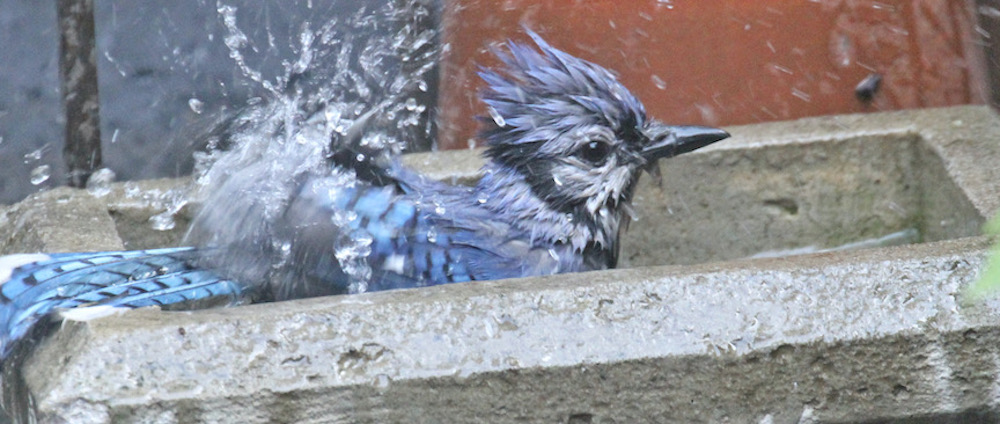It's the fifty-seventh week of my Tuesday's Truths series and I'd like to dedicate my entry to some facts re molting when it comes to Mallard ducks. I am prompted to point out a few truisms re this topic, because this past Wednesday, when I was at a pier on The Hudson River (in NYC) and met my first Muscovy duck; I also came upon a number of mallards going through their molting process; as evidenced in the photographs atop this entry.
According to Ducks Unlimited, "old worn feathers must be replaced. Molting is the process of replacing worn feathers. Ducks molt in the late summer and in the early spring. During the fall ducks molt synchronously, or lose and replace all of their feathers in a short period of time. Synchronous molting renders ducks flightless during a portion of this time thus at a greater risk to predators until the new feathers come in. Losing and replacing all of one's feathers can take up to two weeks. The new feathers are drab in color and considered a duck's basic plumage..."
I find it interesting that (according to Cornell's web-page), "the Mallard is the ancestor of nearly all domestic duck breeds (everything except the Muscovy Duck)."
For even though the "the Mallard is the ancestor of nearly all domestic duck breeds (everything except the Muscovy Duck);" these bird types seem to enjoy or at least tolerate each others company, (as seen in the images directly above as well as below).
Seeing these duck types spending time in each other's company, seems a bit of a disclaimer re the old adage which proclaims birds of a feather flock together.
Of course it's quite possible that these unrelated (ancestor wise) can be in enjoy each others company due to the fact that they are not members of the same family tree. After all, many people get along better with those outside the family unit!
But, that, as "they" say is another story, which I may take up at another time. For now, I'll stick to the topic of this Tuesday's truth, and tell you another fact (which also comes from the aforementioned Cornell web-page) re molting and Mallards:
"Mallards, like other ducks, shed all their flight feathers at the end of the breeding season and are flightless for 3–4 weeks. They are secretive during this vulnerable time, and their body feathers molt into a concealing “eclipse” plumage that can make them hard to identify."
The following set of images feature the mallards I saw (from that same pier on The Hudson River), who were enduring their molting process.
And just as kept my eye on the molting birdies, one of them seemed to keep his eye on me.





















No comments:
Post a Comment
Note: Only a member of this blog may post a comment.